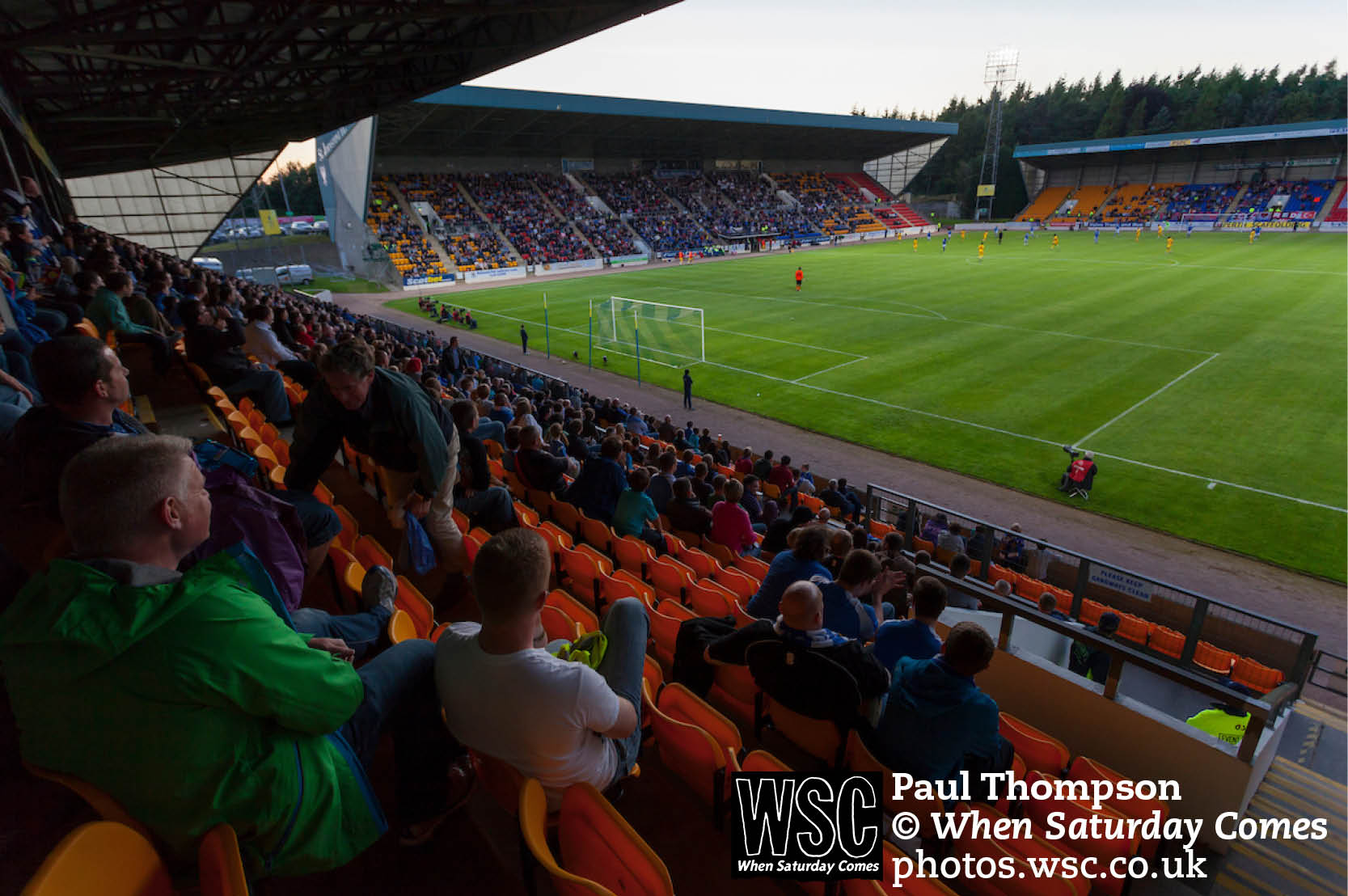
Britain’s first purpose-built all-seat stadium was well ahead of its time when it opened in August 1989 and went on to serve as a blueprint for the post-Taylor Report football ground revolution
19 March ~ Tottenham Hotspur spent £1 billion on their space-age stadium but they’re 30 years behind St Johnstone. Spurs’ behemoth is the latest iteration of the revolution that swept across football following the Taylor Report, forcing clubs to go all-seat and invest in new infrastructure.
In the same month that the report was published, August 1989, St Johnstone opened McDiarmid Park, Britain’s first purpose-built all-seat stadium, with a capacity of 10,696. Other clubs claim the title of being the first all-seat ground but their efforts were wooden benches crudely hammered onto terracing. McDiarmid Park is the stadium that every other club has followed; Lord Taylor even came to inspect it as part of his report. It was way ahead of its time, with four fully covered stands. Next to it was parking for 1,000 cars and 100 coaches, plus a synthetic surface designated as a training ground.
“The intention was to build a wee cauldron of a stadium,” says former star striker and now associate director Roddy Grant. “As a squad we couldn’t wait to play there.” St Johnstone had been at their spiritual home of Muirton Park since 1924 but the club’s then chairman Geoff Brown sensed that a change was needed. As long-time Saints fan Rob McInroy explains: “Without Geoff we would have gone bust. We put our faith in him to sort it out and he did. A lot of the clubs who were thinking about changing their stadium came to see McDiarmid Park in the years after it opened, as it was the forerunner. Muirton was falling part. It was so ramshackle, the stands were wooden with the slats underneath and it was declared unsafe after the Bradford fire – we had to leave.”
Instead of trying to build new terracing Brown shut parts of the ground and did a deal to sell the Muirton site to Asda in 1986. Then local farmer Bruce McDiarmid – hence the stadium’s name – donated 16 acres of his land, not to the club but to the people of Perth. The construction costs were £4.9 million, a fortune for a team in Scotland’s second tier.
But it was spent wisely, with the focus on creating a proper football arena, an endeavour in which many of the future bigger all-seat stadiums failed. “The pitch is way down low and the fans are on top of you, there’s no big running track around it,” says Grant. “That really helped us in the first season, we were winning games so the fanbase grew and grew. Halfway through that season we were playing each week in front of 9,000 to 10,000.” That number is even more impressive when it’s noted that only 466 people had turned up against Albion Rovers a few years before.
McDiarmid makes money seven days a week, says Grant: “We’ve held conferences, we sell the lounges for commercial use and also host funerals – there was so much forward planning.” It was also bizarrely used to hold a Jehovah’s Witnesses convention involving a giant 33-foot pool for a mass baptism, and Elton John even packed in 16,000 punters for the stadium’s first ever concert in 2008. Financial stability from the stadium income has allowed St Johnstone to flourish. Their golden period started on McDiarmid Park’s debut, as the home team beat Clydebank 2-1. Sir Alex Ferguson – a former St Johnstone player – brought his Manchester United team for a friendly to officially open the stadium the following month. Since then they’ve had 20 seasons in the Scottish Premiership, qualified for European football six times and won their only major trophy, the 2014 Scottish Cup. But the biggest impact is one not seen on spreadsheets or record books.
Diehard supporter Gary Panton was eight when McDiarmid opened. “What I really remember from the time is the huge buzz it created among kids my age. A lot of children in my class used to wear Rangers, Celtic or Aberdeen tops, but when McDiarmid Park opened it suddenly felt like everyone had an interest in Saints. When I started going to away games, we’d visit other Scottish clubs that were much more successful and yet the stadiums they were playing in just couldn’t touch what Saints had. At the time, we were arguably the most forward-thinking club in the whole of the UK.” Thirty years on, McDiarmid Park’s legacy is undeniable. Chris Sweeney
McDiarmid Park photo by Paul Thompson / WSC Photos
This article first appeared in WSC 397, April 2020. Subscribers get free access to the complete WSC digital archive – you can find out more here
